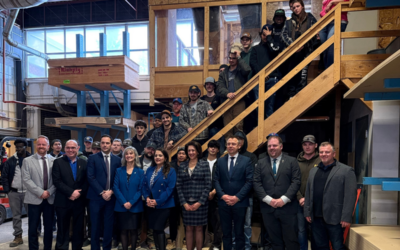By Zachary Flynn
The COVID-19 pandemic has radically changed the landscape for post-secondary education with many students learning remotely.
The lack of a physical classroom and the new ability to attend a class from the comfort of home has some wondering why they’re still paying thousands of dollars for tuition.
The answer is quite simple: NAIT isn’t saving any money by going online.
“We still have the same costs of people doing their jobs and delivering the training and doing all of the support types of activities,” said Jeff Dumont, NAIT’s Chief Financial Officer and Vice-President of Administration.
“You are seeing some ups and some downs for sure but in general there isn’t a substantial savings. Most of our buildings are still open for labs and other types of activities. You do see some extra costs for the extra utilities for greater HVAC types of considerations with COVID, but it’s offset by some fewer costs in certain areas where buildings aren’t being used to the same extent. Overall it’s not a substantial savings from the building perspective.”
In the 2018-2019 year, only 20 per cent of NAIT’s operational expenses went towards facilities operations and maintenance, whereas over 41.5 per cent of the entire institutions’ expenses went towards instructional delivery, according to the NAIT Annual Report from 2018/19.
“We’re mostly people-costs,” said Dumont. “The cost structure has not been radically different in one way of delivery services versus the other. So if we have more people going back and teaching and more people back on campus, we still have the same amounts of industry experts teaching those courses.”
There have also been some extra costs that come with pushing the vast majority of NAIT’s instructors to teach online from home.
“One example where we’ve had to have the most purchases is things like webcams and headsets. Everyone needs to have a laptop to be working from home environment so there have definitely been some investments on the technology side and there have been some investments in developing some supports for our instructors as well,” he explained. “We are requiring them to work from home so we have to make sure they’re successful.”
While expenses have been steady from pre-COVID times through to today, NAIT’s revenue has taken a hit.
“It’s a combination of some of our revenues being down for our continuing education and corporate training and some of that’s related to COVID and some of it’s related to just general health of the economy,” said Dumont.
On top of tuition and government grants, NAIT brings in revenue through the NAIT bookstore, eat AT NAIT locations, parking, conference and event hosting, corporate training, research and other rental and service opportunities. All of these income streams have been negatively impacted due to COVID-19.
Dumont mentioned NAIT was also expecting a larger cut to the institution’s tuition revenue, which wasn’t the case for the fall semester.
“The latest numbers are showing that we’ve been fairly resilient [with enrollment numbers]. So we certainly aren’t increasing in this environment but it is better than what we had envisioned in the budget process. We expected fairly substantial declines,” he said.
A lack of revenue in other areas like parking and event hosting means that NAIT will become further reliant on its tuition income to fund operations.
NAIT has put a focus on diversifying its income streams for a number of years, having operated at a deficit since the 2016/17 school year. Since then, NAIT has been working on plans to bring the institution back to a surplus, however, COVID has brought a lot of uncertainty as to when that will happen.
“We engaged in a process prior to COVID that would have had us returning to surpluses. Now we just have to figure out how long the COVID impact is, how big it is and determine if it requires further types of actions,” Dumont said.
Dumont also said NAIT’s capital projects like student housing development and other campus development work in Blatchford shouldn’t be affected by NAIT’s overall financial position, as those projects are largely funded through government grants.






